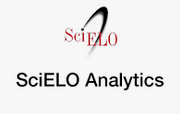EDUMECENTRO 2022;14:e2175
EDITORIAL
EDUMECENTRO adopts continuous publication: a suitable modality for immediacy in the editorial flow
EDUMECENTRO adopta la publicación continua: modalidad propicia para la inmediatez en el flujo editorial
Paz Maritza Franco Pérez1* http://orcid.org/0000-0003-4310-5219
1 Villa Clara University of Medical Sciences. General Training Department. Villa Clara. Cuba.
* Author for correspondence. Email: maritzafranco@infomed.sld.cu
Submitted: 28/11/2021
Accepted: 28/11/2021
It is a fact that the demand for spaces for the dissemination of scientific articles is highly increasing, which has forced us to reconsider new ways in editorial policy in multiple journals, mainly with regard to periodicity.
The time elapsed between the approval and publication of an article is increasingly long, the delay in publication, perhaps due to strict compliance with the periodicity among other factors is a striking element for us, and that becomes a disadvantage that It particularly affects the authors, who in the case of EDUMECENTRO have selected it as a means of disseminating their scientific work in the shortest possible time.
In recent years, the need to shorten times for the publication of articles has been demanded with more emphasis in Latin America, and particularly in Cuba, to respond to the different postgraduate programs where it is established as a formal requirement for the degree, that the Students publish one or more articles in indexed scientific journals, where they present the partial and final results of their research work.(1) This is why, for some years, other publication models have been instituted in some journals in order to have a more immediate exposure of the digital content of their articles.
The way in which the publication in EDUMECENTRO has been carried out until the year 2021 in blocks of volumes, -and among them, numbers- has brought with it that the appearance of some articles has been delayed, which produces a delay in the communication of scientific results with negative consequences in certain editorial aspects: indexing, citation, recognition of authorship, as well as the impact and socialization of the results itself. But this new form of continuous publication that is adopted since 2022 entails the disappearance of the periodicity in which the numbers have been published from 2009 to 2021, and an annual publication is established, in the form of volume as the only compartment in which the items are continually being included.
Continuous publication publishes the article when it is ready to be included in the journal, that is, through this modality the articles are published once the peer review and original correction process has been completed, the philological correction, translation and layout. (2,3)
Among the main advantages of this modality are mentioned, according to Quirós Segura, cited by Santana Delgado Amaya:(4)
-
The presentation and publication times of the articles decrease.
-
Immediacy in the dissemination of scientific information
-
Little risk that research data is out of date at the time of publication
-
Increased visibility of investigations
-
Power better editorial flows
-
Greater amount of updated information so that the user can read and quote
-
Promotes the continuous reception of scientific articles
Assuming the advantages of this publication modality, insistently requested by SciELO,(5) as an electronic library project whose objective is the development of a common methodology for the preparation, storage, dissemination and evaluation of scientific literature in electronic format, the Editorial Board of the EDUMECENTRO Journal has decided to apply it from this Volume 14 of the year 2022. Its implementation will bring positive changes in the journal, mainly in relation to the publication flow, immediacy and decrease in the number of articles in the editorial mattress, among others. At present, many journals have adopted this model of continuous publication, or are considering doing so as it constitutes a trend with encouraging results for the optimization of editorial processes.
Assuming continuous publication constitutes a new challenge for EDUMECENTRO's editorial and editorial boards, and represents a commitment to the academic community that publishes its research work in it. We hope to remain a preferred journal for its articles on medical education.
BIBLIOGRAPHIC REFERENCES
1. Trujillo Holguín JA. La publicación continua como reto para IE Revista de Investigación Educativa de la REDIECH. IE Revista de Investigación Educativa de la REDIECH [Internet].2020 [citado 25/11/2021];11:[aprox. 14 p.]. Disponible en: https://www.redalyc.org/journal/5216/521662150001/movil/
2. Pérez Andrés C. La publicación continua frente a la publicación periódica. Otra vuelta de tuerca en la edición de las revistas científicas en internet. Rev Esp Salud Publ [Internet]. 2015 [citado 23/11/2021];89:[aprox. 4 p.]. Disponible en: https://scielo.isciii.es/scielo.php?script=sci_arttext&pid=S1135-57272015000600001
3. Zuluaga Mesa DE. Una nueva impronta: publicación continua. Perseitas [Internet]. 2020 [citado 25/11/2021];8:[aprox. 3 p.]. Disponible en: https://www.funlam.edu.co/revistas/index.php/perseitas/article/view/3532/2736
4. Santana Delgado A. Implementación de la publicación continua (periódica) en la Revista Cubana de Ortopedia y Traumatología. Rev Cubana Ortop Traumatol [Internet]. 2019 [citado28/11/2021];33(1):[aprox. 4 p.]. Disponible en: http://scielo.sld.cu/scielo.php?script=sci_arttext&pid=S0864-215X2019000100001
5. SciELO. Guía para la publicación de artículos de revistas indexadas en SciELO en la modalidad de Publicación Continua [Internet]. 2015 [citado 30/10/2018]. Disponible en: http://www.scielo.org.mx/avaliacao/GuiaPublicacionContinua_ES.pdf
Declaration of interests
The author declares no conflict of interest.
Copyright (c) 2022 EDUMECENTRO

Esta obra está bajo una licencia de Creative Commons Reconocimiento-NoComercial-CompartirIgual 4.0 Internacional.










